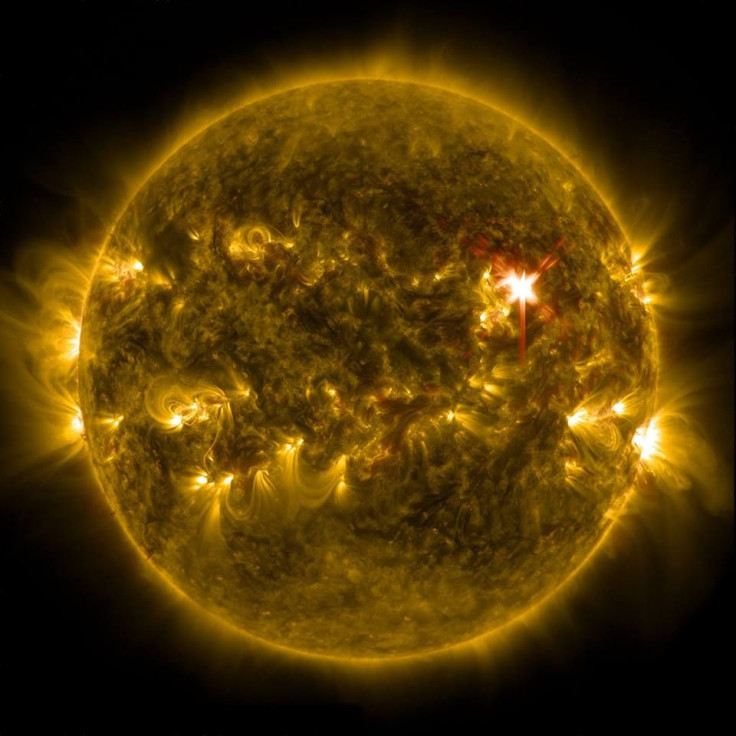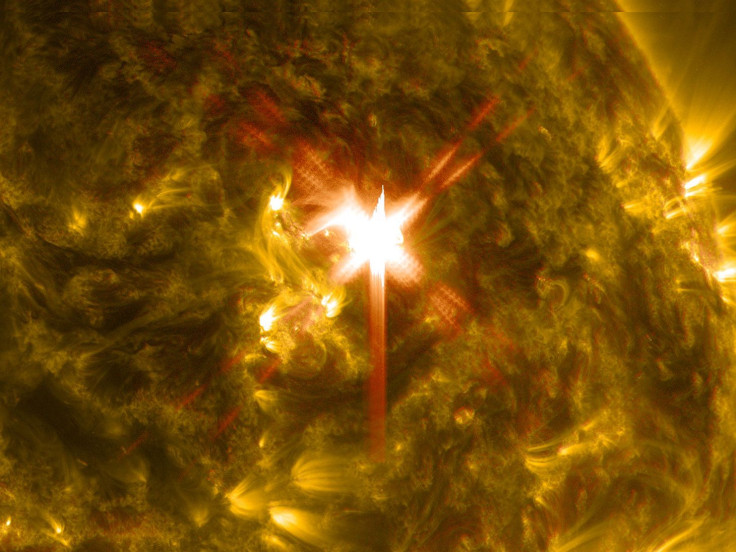Sun Emits X-Class Solar Flare Over The Weekend, Coronal Mass Ejection Could Cause Geomagnetic Storm
The sun emitted a massive X-class solar flare over the weekend and researchers believe a coronal mass ejection (CME) was associated with the event. The solar flare occurred on March 29 and researchers are tracking a possible geomagnetic storm that will occur on Wednesday when the CME is expected to reach Earth.

NASA reports the solar flare occurred on March 29 at 1:48 p.m. EDT and was observed by the Solar Dynamics Observatory. According to SDO, the solar flare erupted from the sunspot AR2017. In the blog post discussing the X-class solar flare, Dean Pesnell discusses a coronal dimming event, a decrease in the brightness of the surface of the sun, which can be seen over the course of five hours and coronal dimming is usually associated with a CME.
The National Oceanic and Atmospheric Administration's Space Weather Prediction Center has issued a geomagnetic storm watch for April 2. On Facebook the Space Weather Prediction Center states, “A G1 (Minor) geomagnetic storm WATCH has been issued for 02 April as a series of 'glancing-blow' coronal mass ejection (CME) arrivals associated with the recent flare activity from sunspot region 2017 are expected at Earth.”

A G1 geomagnetic storm could lead to “weak power grid fluctuations and affect satellites. The X-class solar flare led to a R1 radio blackout which lasted for an hour. There is a minor chance of additional solar flares erupting from sunspot AR2017 in the next few days.
Sunspot AR2017 was quite active over the weekend, producing three solar flares in total. In addition to the X-class solar flare on March 29, two M-class solar flares erupted from the region on March 28 and March 30.
© Copyright IBTimes 2024. All rights reserved.






















